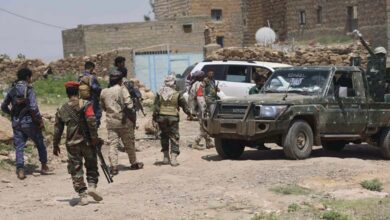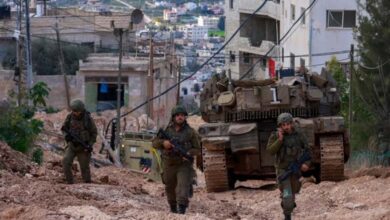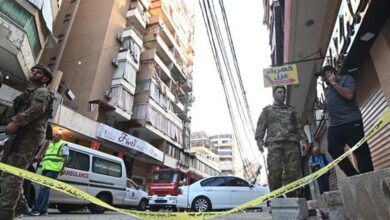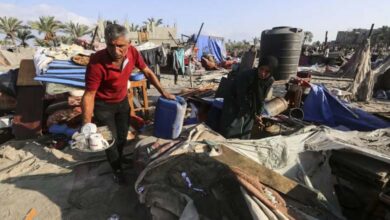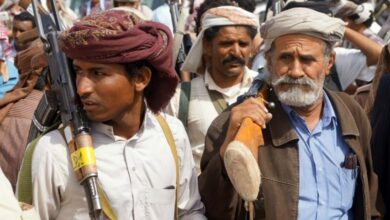After the Truce… a Silent Enemy Threatens Gaza
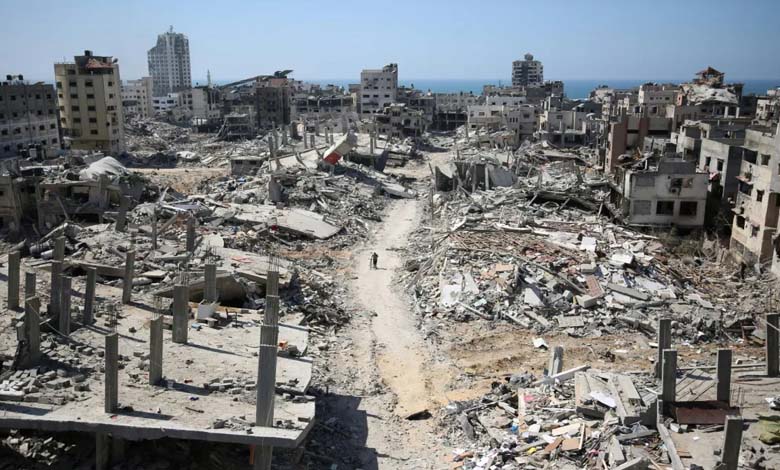
While attention focused on the clauses concerning disarmament and hostage exchange in the ceasefire agreement signed on October 8 between Israel and Hamas, the provision related to the flow of humanitarian aid was expected to be the easiest to implement.
Yet, as soon as the agreement took effect, it became evident that hunger—not rockets—might pose the greatest threat to maintaining the truce. According to an analysis by Foreign Affairs, Gaza’s fragile infrastructure and political maneuvering could push the enclave into a total humanitarian collapse, endangering the fragile peace.
-
Arab States Reject Israeli Plan to Divide Gaza
-
Vance Tackles Thorny Issues in Gaza: Hamas’s Arsenal and Reconstruction
The “Aid Blockade”
Under the “Trump Twenty-Point Plan,” 600 aid trucks were to enter Gaza daily without obstruction to meet the basic needs of a population exhausted by war, famine, and displacement. But just two weeks after the agreement’s signing, promises turned into new obstacles.
Israel delayed the reopening of the vital Rafah crossing and cut the number of trucks in half, citing Hamas’s failure to return the bodies of deceased hostages, even though the International Committee of the Red Cross confirmed that recovery operations required specialized equipment and more time.
-
Gaza Truce: Israel identifies a body as U.S. diplomatic efforts intensify to sustain calm
-
The recent escalation in Gaza: will it accelerate international oversight of the truce?
Tel Aviv then threatened to shut down all crossings after a shooting incident in Rafah but backed down under direct U.S. pressure when it was discovered that the incident was caused by an unexploded shell.
Meanwhile, major humanitarian organizations halted operations due to new Israeli registration requirements, and large areas of northern Gaza remained inaccessible, despite the agreement’s guarantee of “full freedom of passage.” According to the World Food Programme, less than half of the required aid had entered Gaza by October 21, as hunger indicators soared to catastrophic levels.
-
Serious truce violation: Israel strikes Rafah after vehicle targeted in Gaza
-
After the Gaza Agreement… Receding Justifications and Rising Pressure to Disarm Hezbollah
Aid as a Bargaining Chip
For years, humanitarian aid has been weaponized as a tool of negotiation and political pressure. Under the formula of “aid for hostages,” the entry of food and medicine has become subject to Israeli military and political decisions, effectively legitimizing a policy of collective punishment against Gaza’s civilians.
Although international humanitarian law requires all parties to allow relief access to civilians, Israel has continued to maintain direct control over delivery channels and has refused to cooperate with the United Nations Relief and Works Agency (UNRWA), the backbone of Gaza’s humanitarian system.
-
Trump announces the start of Phase Two of the plan to end the Gaza war: pathway and obstacles
-
Hamas bullets dictate the ceasefire in Gaza… as international pressure mounts for disarmament
Gaza on the Brink of Famine
More than two years into the war, Gaza’s residents are enduring the worst humanitarian crisis in their modern history. The full Israeli blockade, imposed since March 2025, has destroyed every element of civilian life. In August, the United Nations officially declared a state of famine in parts of the enclave.
The UN estimates that over 1.9 million Palestinians—nearly the entire population of Gaza—have been repeatedly displaced by bombings and evacuation orders. Around 80% of housing, 89% of water and sanitation systems, and 94% of hospitals have been damaged or destroyed.
The crisis stems from former Israeli Defense Minister Yoav Gallant’s October 2023 order to impose a “complete siege,” blocking food, water, electricity, and fuel. The policy, strictly enforced, evolved into a systematic starvation strategy.
-
Netanyahu once again at the gates of hell… will Trump’s Gaza plan endure?
-
Massive destruction as thousands of displaced Palestinians return to Gaza
Collapse of UNRWA and the Lack of Alternatives
Since 2024, Israel has led a sustained campaign to weaken UNRWA, culminating in a Knesset law banning official dealings with the agency, accusing it of Hamas infiltration. Although a UN investigation later revealed that only nine of thirty thousand employees had engaged in individual misconduct, the political damage was severe. These actions crippled the agency’s ability to manage relief operations, stripping Gaza’s humanitarian framework of its core mechanisms.
International Justice Pursues Israel
In March 2024, the International Court of Justice unanimously ordered Israel to ensure “wide and immediate” humanitarian access. Even the Israeli judge on the panel, Aharon Barak, supported the ruling. Later, the International Criminal Court indicted Prime Minister Benjamin Netanyahu and former Defense Minister Gallant for “starvation of civilians as a war crime.”
-
A Complex and Secret Operation: Behind the Scenes and Timing of the Hostage Exchange in Gaza
-
Palestinian prisoners and Gaza hostages: preparations for the final exchange
A UN report published in September 2025 concluded that Israel had committed genocide in Gaza through deliberate starvation, obstruction of relief, and targeting of medical facilities. Despite Israel’s rejection of these findings, it now faces direct legal responsibility to guarantee continued aid flow under the ceasefire agreement.
Washington: The Last Safeguard
Amid this complex landscape, U.S. pressure remains the key factor sustaining aid deliveries. The United States established the Civil-Military Coordination Center (CMCC), overseen by the Department of Defense, to monitor the humanitarian clause’s implementation. About 200 American troops supervise logistics and ensure aid delivery.
-
Gaza After the Truce: Total Destruction and a Return Amid the Rubble
-
Between War and Reconstruction: How Can Gaza’s Economy Rise from the Rubble?
However, the center’s success depends on close cooperation with UN mechanisms rather than replacing them. Previous Israeli efforts to establish a “Gaza Humanitarian Foundation” managed by military contractors ended tragically when thousands of starving civilians stormed warehouses, resulting in hundreds of deaths.
UN experts therefore recommend creating an independent international monitoring mechanism under U.S. and regional supervision to prevent interference and enforce the ceasefire’s humanitarian provisions.
-
Morning of truce… Gaza bids farewell to war
-
The War Winds Down in Gaza as Israel Begins Gradual Withdrawal
Hunger: A Silent Threat to Peace
As Foreign Affairs observes, after two years of death and destruction, Gaza may finally have a small window of hope for recovery—but peace cannot endure if people are starving. Humanitarian aid is not merely a moral imperative but a strategic pillar of stability.
If the international community fails to ensure access to food, medicine, and fuel, social unrest could erupt anew, plunging the region back into violence and undermining all political efforts.
Saving Gaza, the analysis concludes, requires more than silencing the guns—it requires silencing hunger. This demands unrestricted access for the United Nations and humanitarian agencies, backed by full protection and financial and political support from the truce’s guarantor states.


